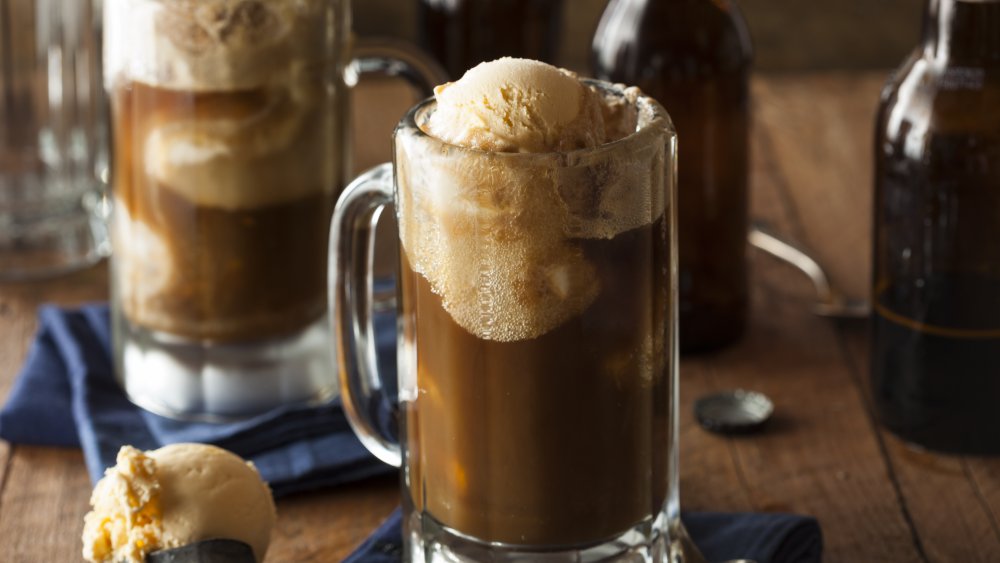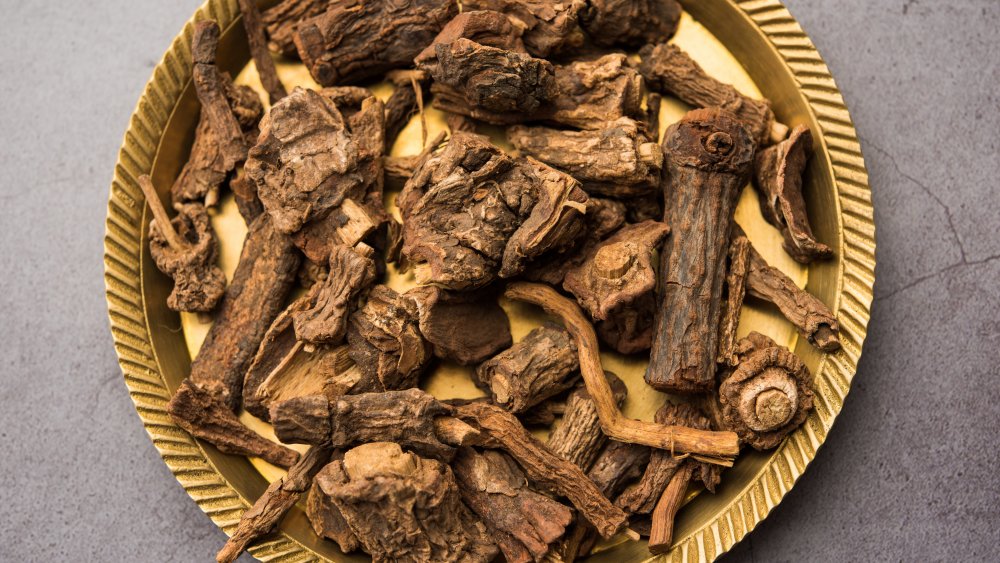This Is Where The Flavor Of Sarsaparilla Comes From
Who doesn't love a root beer float? As a child, the thought and action of being able to drink root beer made everyone feel like they were an adult. The idea of drinking something that had "beer" attached to it inspired some serious level of awe and pseudo-maturity. The taste was something that was also of note for this popular drink (via Future Market Insights). But what made root beer, and in turn it's predecessor sarsaparilla soda, taste the way it did?
It's all in part to the sassafras root bark that was used from the early 16th century all the way to 1964 when the FDA banned the use of sassafras root bark in food and drink products after testing showed it to possess carcinogenic compounds dangerous for humans, according to Wide Open Eats. Sarsaparilla soda, which was in fact a carbonated drink, normally gets associated with the Old West as it was very popular during the 19th century (via Root Beer Respect).
Sarsaparilla was thought to have healing properties
This drink, which doesn't have a single alcoholic element to it (via Serious Eats), was once even thought to have healing compounds that could help cure things like herpes and gonorrhea. According to Healthline, sarsaparilla is a tropical woody vine that can be found in South America, the Caribbean, and Mexico. Indigenous people across the globe used the plant for different ailments like arthritis, psoriasis, and eczema. The same Healthline report asserts that the popular 1800s drink was made using sassafras and is said to have tasted like root beer or birch beer.
Serious Eats reports that sarsaparilla soda shares a very similar taste profile to root beer in that they both have hints of licorice, wintergreen, and a pleasant medicinal quality. Unfortunately, once the FDA tested the properties of sassafras, a main ingredient, sarsaparilla soda became a thing of the past (via Wide Open Eats). From then on, root beer became the norm, replacing the sassafras compound with other root flavors and artificial ingredients (via Wide Open Eats).

